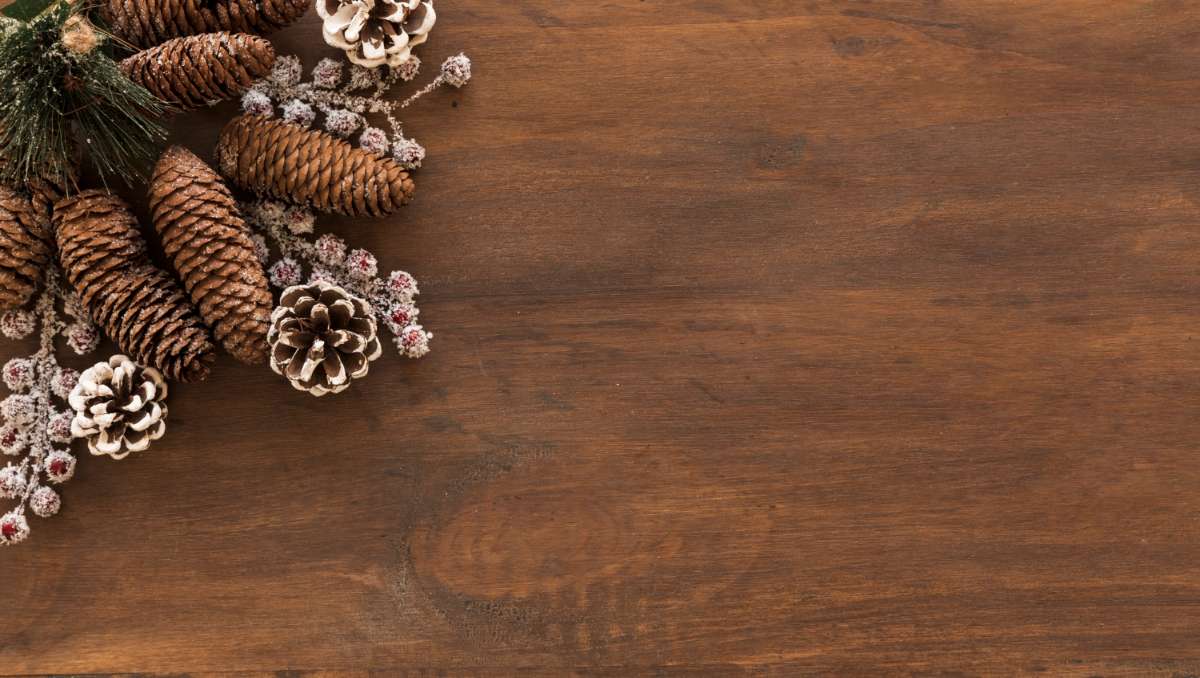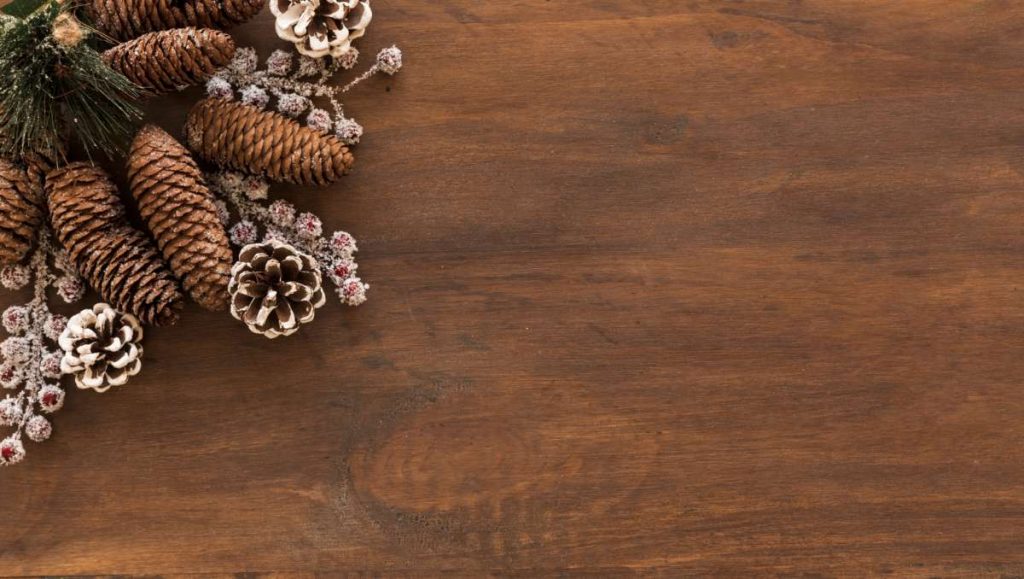
When selecting the right wood for your furniture, the decision can be daunting with so many options available. Among the various choices, pine often stands out. It’s a wood that’s widely recognized for its rustic charm, affordability, and versatility, making it a favorite in many homes. But before you commit to using pine, it’s important to consider whether it truly meets your needs in terms of durability, appearance, and long-term value. Is pine wood a good choice for your furniture?
Key Takeaways
- Pine wood is a cost-effective choice for furniture due to its rapid growth and easy processing.
- Pine is softer than many hardwoods, so it dents and scratches easily. Its softness and susceptibility to moisture make it less suitable for high-traffic areas or furniture that sees heavy use.
- Pine furniture requires regular maintenance to protect against damage. Using protective finishes and avoiding harsh chemicals can help extend its lifespan.
This guide highlights the pros and cons of pine wood, helping you understand whether it’s the right fit for your next furniture project.
A Closer Look at Pine Wood
To fully appreciate the benefits and limitations of pine wood, it’s essential to examine its distinct characteristics, including its grain patterns, durability, and versatility in various applications. But before that, you need to understand the two types of pine wood:
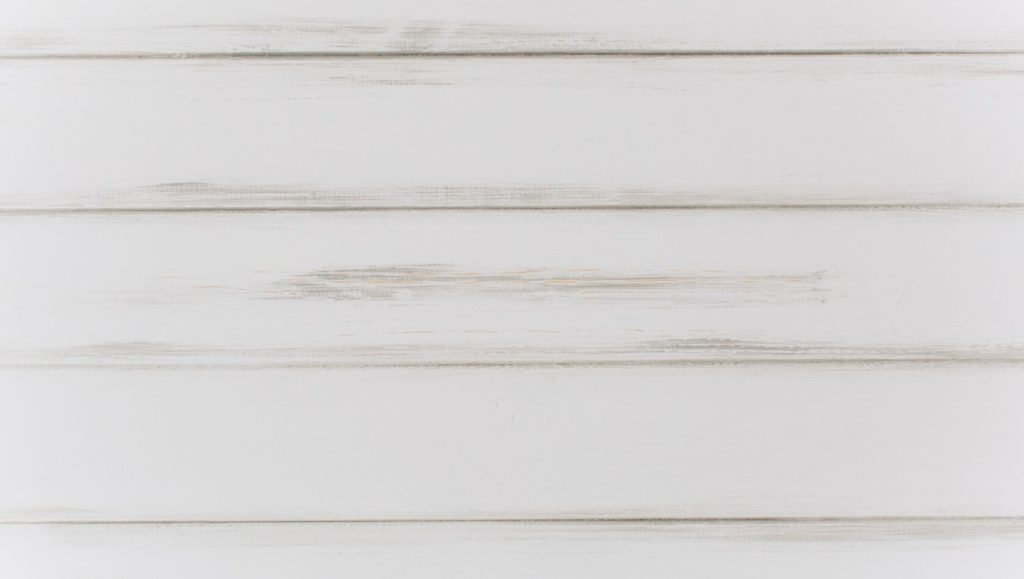
White Pine
This type of pine is known for its fine, straight wood grain and smooth texture. It has a pale, creamy color and can range to a light yellow, making it a versatile choice for various finishes. White pine is softer than yellow pine, making it easier to work with but more prone to dents and scratches.
Yellow Pine
Yellow pine, often found in the southeastern United States, is harder and stronger than white pine. Its more distinctive grain pattern can add a lot of character to many pieces of furniture. Its natural color ranges from light yellow to a richer golden hue and darkens with age.
Characteristics of Pine Wood
Pine wood is favored in woodworking and construction for several reasons. It is lightweight and easy to handle, cut, shape, and sand, making it ideal for various projects. The wood typically has a straight, uniform grain with occasional knots and ranges in color from pale yellow to light brown, which can be enhanced with stains or finishes.
Although pine is less durable than hardwoods and can be prone to dents and scratches, treated pine is sturdy enough for many uses. It is also more affordable and a sustainable choice, as it grows quickly and is often harvested from managed forests. However, pine contains natural resin that can sometimes make surfaces sticky or sap-rich.
Pros of Using Pine Wood for Furniture

Pine has many advantages that make it a popular choice for furniture. Here’s why pine is such a favored material in many homes:
Affordability
Pine trees grow quickly and are plentiful, especially in North America. This rapid growth makes pine more affordable and easier to harvest compared to slower-growing hardwoods like cherry or oak. Pine is also simpler to cut and process, further reducing costs. Its local availability helps keep transportation expenses low. As a result, pine offers a cost-effective option for families and budget-conscious buyers looking for quality furniture at a reasonable price.
White Pine is typically priced at $3.50 to $4.50 per board foot, while Yellow Pine ranges from $2.50 to $3.50. These prices reflect the wood’s accessibility and lower processing costs, making pine furniture an attractive choice for those seeking quality at a lower price
Versatility
Pine wood’s versatility allows it to be used for various furniture pieces, from bed frames to kitchen cabinets. Its light color and grain pattern fit well with different decor styles, including rustic, country, and modern. Pine also absorbs stains and paints evenly, offering many customization options. Homeowners can either enhance its natural grain with a clear stain or change its look with bold colors, making it easy to match pine furniture to their personal style and home decor.
Aesthetic Appeal
The natural beauty of pine wood is evident in its light color and distinctive grain, complete with unique knots that add character to each piece. Its warm, rustic appearance brings a cozy, welcoming feel to any room, making it a favorite for farmhouse and country-style interiors. Pine can also be stained to resemble more expensive woods or painted to suit any color scheme, providing endless customization options.
Cons of Using Pine Wood for Furniture
While pine wood offers many benefits, it also has some drawbacks that are important to consider when choosing it for furniture. Let’s explore the cons associated with pine wood.
Softness and Durability
One major drawback of pine wood is its softness, which makes it more prone to dents and scratches compared to harder woods like oak. This makes pine less ideal for high-traffic areas or heavily used furniture, like dining tables in busy homes. Pine is also more susceptible to moisture damage, leading to warping and swelling due to its porous nature.
Research indicates that pine wood’s strength and elasticity decrease after 25-75 years of use, especially under varying temperature, humidity, and load conditions. This means pine furniture may lose its structural integrity faster than harder woods over time.
Maintenance
Maintaining pine furniture requires some care due to its tendency to dent and scratch. Using protective finishes like polyurethane or varnish can help shield the wood from damage and extend its lifespan. Regular cleaning with a mild soap and water solution is important, and harsh chemicals should be avoided. To prevent scratches and stains, use coasters and placemats. For deeper scratches or dents, light sanding and touch-ups with matching stain or paint can restore the surface.
Best Uses of Pine Wood in Furniture
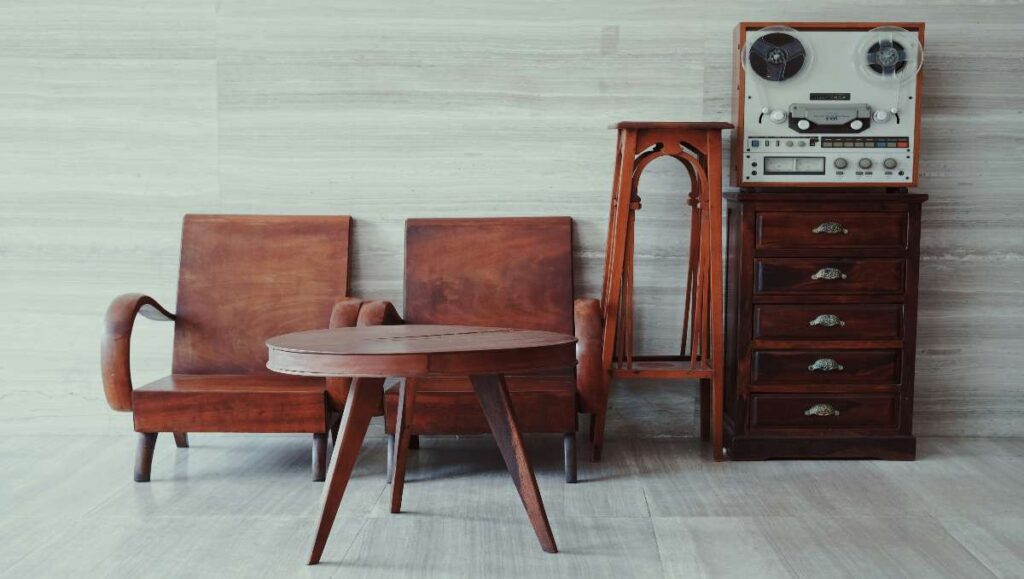
Pine wood’s versatility and aesthetic appeal suit a variety of applications, such as the following:
Indoor Furniture
Pine wood is a popular choice for indoor furniture, including beds, tables, chairs, and cabinets. Its light color and distinctive grain with knots add a warm, rustic charm to any room. Pine wood is often used for country or rustic-style furniture, adding warmth and character to any space. Browse our collection of Amish rustic tables now and find the perfect one for your home.
Outdoor Furniture
Pine wood can be used for outdoor furniture, but it requires proper treatment to withstand adverse weather conditions. When treated with weather-resistant finishes, outdoor pine furniture can resist moisture and insect damage, making it suitable for outdoor tables, benches, and garden furniture.
DIY Projects
Pine wood is an excellent material for DIY enthusiasts’ home projects and crafts. Its softness and ease of workability make it a favorite among hobbyists and amateur woodworkers. Pine can be easily cut, sanded, and shaped with essential tools, making it ideal for a beginner’s woodworking project, creating custom furniture pieces, shelves, and decorative items.
Comparing Pine Wood to Other Woods
When selecting wood for a project, understanding the characteristics and advantages of pine compared to other types of wood can significantly impact your decision-making process. Here’s how pine wood compare with other wood types for furniture:
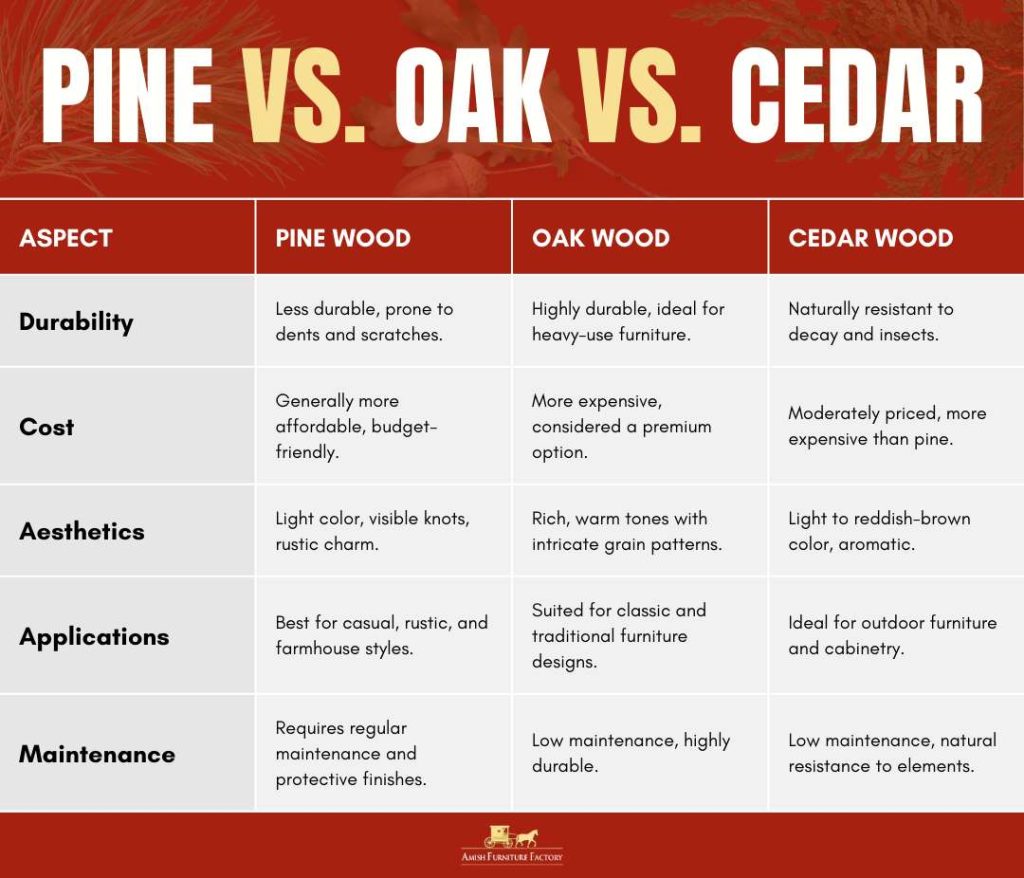
Making the Right Choice for Your Home
Pine wood is a popular choice for furniture due to its affordability, versatility, and natural beauty. Its light color and unique grain patterns make it suitable for various decor styles, and it takes stains and paints well. However, pine’s softness and susceptibility to moisture damage mean it needs careful handling and regular upkeep.
While pine offers a budget-friendly option for many projects, it may not be the best choice for high-traffic furniture or areas with heavy use. By weighing its benefits and drawbacks, you can decide if pine wood fits your furniture needs and home style.
Frequently Asked Questions
Is pine wood waterproof?
No, pine wood is not naturally waterproof. However, it can be treated with sealants or finishes to improve its resistance to moisture.
Does pine wood get harder with age?
No, pine wood does not get significantly harder with age. However, it may become more brittle over time, especially if exposed to fluctuating environmental conditions.
Can you leave pine furniture unfinished?
Yes, you can leave pine furniture unfinished, but it will be more vulnerable to moisture, stains, and damage. Applying a protective finish is recommended to extend its lifespan.
